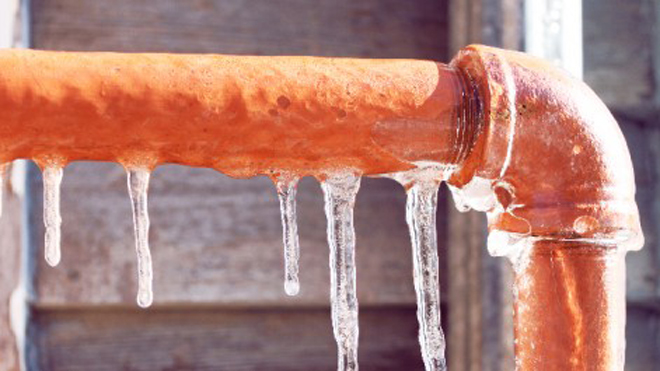How to Defend Plumbing System from Freezing: Key Tips
How to Defend Plumbing System from Freezing: Key Tips
Blog Article
How do you actually feel with regards to Prevent Frozen Pipes ?

Winter can ruin your pipes, particularly by freezing pipes. Right here's how to avoid it from taking place and what to do if it does.
Intro
As temperatures drop, the risk of icy pipelines increases, potentially leading to pricey repair services and water damage. Understanding exactly how to prevent icy pipes is crucial for home owners in chilly climates.
Understanding Icy Pipes
What triggers pipes to ice up?
Pipelines freeze when revealed to temperatures listed below 32 ° F (0 ° C) for extended durations. As water inside the pipelines ices up, it expands, putting pressure on the pipeline walls and potentially creating them to burst.
Dangers and problems
Icy pipes can cause water supply disturbances, residential or commercial property damages, and pricey repair work. Burst pipes can flood homes and trigger comprehensive architectural damage.
Indications of Frozen Pipes
Recognizing frozen pipes early can stop them from bursting.
How to recognize icy pipes
Search for reduced water circulation from taps, uncommon odors or noises from pipes, and visible frost on subjected pipes.
Prevention Tips
Protecting prone pipelines
Cover pipelines in insulation sleeves or make use of warmth tape to shield them from freezing temperature levels. Focus on pipes in unheated or exterior locations of the home.
Heating strategies
Maintain indoor spaces effectively heated, specifically locations with plumbing. Open up cabinet doors to permit cozy air to flow around pipes under sinks.
Shielding Outside Pipes
Garden hoses and exterior faucets
Separate and drain yard hoses before wintertime. Set up frost-proof faucets or cover outdoor faucets with shielded caps.
What to Do If Your Pipelines Freeze
Immediate activities to take
If you think icy pipelines, maintain faucets available to soothe pressure as the ice thaws. Use a hairdryer or towels soaked in hot water to thaw pipelines gradually.
Long-Term Solutions
Architectural changes
Consider rerouting pipes away from exterior walls or unheated areas. Include added insulation to attic rooms, cellars, and crawl spaces.
Updating insulation
Buy high-grade insulation for pipelines, attic rooms, and wall surfaces. Correct insulation aids preserve constant temperatures and decreases the risk of frozen pipelines.
Verdict
Stopping frozen pipes calls for aggressive procedures and fast actions. By understanding the reasons, indicators, and preventive measures, homeowners can shield their pipes during winter.
5 Ways to Prevent Frozen Pipes
Drain Outdoor Faucets and Disconnect Hoses
First, close the shut-off valve that controls the flow of water in the pipe to your outdoor faucet. Then, head outside to disconnect and drain your hose and open the outdoor faucet to allow the water to completely drain out of the line. Turn off the faucet when done. Finally, head back to the shut-off valve and drain the remaining water inside the pipe into a bucket or container. Additionally, if you have a home irrigation system, you should consider hiring an expert to clear the system of water each year.
Insulate Pipes
One of the best and most cost-effective methods for preventing frozen water pipes is to wrap your pipes with insulation. This is especially important for areas in your home that aren’t exposed to heat, such as an attic. We suggest using foam sleeves, which can typically be found at your local hardware store.
Keep Heat Running at 65
Your pipes are located inside your walls, and the temperature there is much colder than the rest of the house. To prevent your pipes from freezing, The Insurance Information Institute suggests that you keep your home heated to at least 65 degrees, even when traveling. You may want to invest in smart devices that can keep an eye on the temperature in your home while you’re away.
Leave Water Dripping
Moving water — even a small trickle — can prevent ice from forming inside your pipes. When freezing temps are imminent, start a drip of water from all faucets that serve exposed pipes. Leaving a few faucets running will also help relieve pressure inside the pipes and help prevent a rupture if the water inside freezes.
Open Cupboard Doors
Warm your kitchen and bathroom pipes by opening cupboards and vanities. You should also leave your interior doors ajar to help warm air circulate evenly throughout your home.

I hope you liked our post on Helpful Tips to Prevent Frozen Pipes this Winter. Thank you for spending some time to read through our posting. Do you know about another individual who is very much interested in How to Prevent Your Pipes From Freezing? Do not hesitate to promote it. I cherish reading our article about How to prepare your home plumbing for winter weather.
Schedule Today! Report this page